LENS Show
Drilling Deep
Dittrick Museum Exhibit Examines Cleveland's Dental History
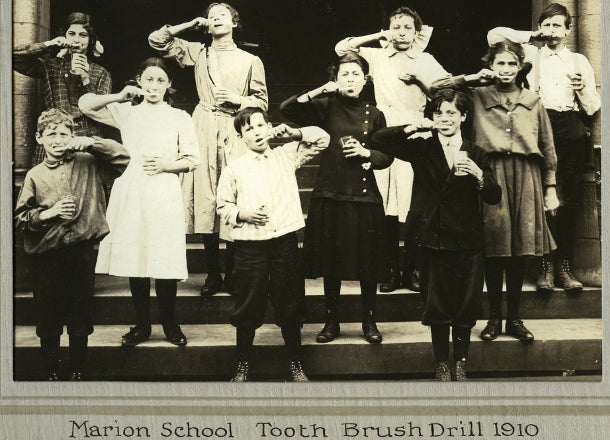 Toothbrush drill in 1910 at Marion School.
Toothbrush drill in 1910 at Marion School.
In 1909, a handful of dentists proclaimed war on poor oral health, taking their tools to classrooms in an impoverished Cleveland neighborhood.
"… one little lad was found to have three abscesses … could it be surprising if he annoyed his classmates or refused to conform to the simplest regulations …?" wrote William George Ebersole, an 1890s alumnus of both the Western Reserve University dental and medical schools who created the schools initiative with Henry Lovejoy Ambler, dean of the dental school from 1893 to 1906.
The very question marked a forward-thinking association between poor oral health and human behavior, said James Edmonson, PhD, chief curator of the Dittrick Museum of Medical History at Case Western Reserve University.
Photographs and documents from that decade-long initiative are just one compelling facet of "Cleveland Dentistry Revisited," an exhibition running through Dec. 31 at the museum as part of the 125th anniversary celebration of the Case Western Reserve School of Dental Medicine.
"Providing access to health care for people who are otherwise disadvantaged has long been part of our [region's] collective consciousness," Edmonson said. "You see that in this exhibit, and today in the outreach of our [university] dentists."
In addition to early 20th century photography, the exhibit includes displays of dentures, drills and other tools that, in some cases, practitioners made to fill the need for better, more e cient equipment.
"Dentists were craftsmen, too," Edmonson said. "They pushed dentistry forward by making their own equipment."
The artifacts come from the museum (it has 1,500 dental pieces) and a handful from the collection of Warren, Ohio, dentist Joseph Chester, DDS (DEN '85), a past president of the American Academy of the History of Dentistry.
Chester said he has a personal collection of 20,000 items that come close to spilling out from each room and into the hallways of his home. He said he has accumulated items during the last 30 years from Europe and across the United States.
Among his favorites: an 1840s jewel-encrusted travel chest for dental instruments; several rst-edition, 16th-century dental books; and a collection of carved ivory dentures created during the Napoleonic Wars of the early 1800s with teeth taken from the bodies of soldiers who died in battle.
"I just have a love for all of these artifacts," Chester said. "Dental history is really just human history."
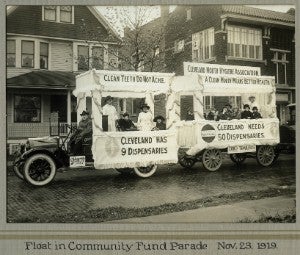 A float in the Community Fund Parade in 1919.
A float in the Community Fund Parade in 1919.
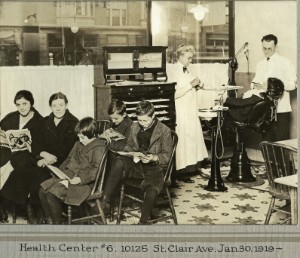 A city health center in 1919.
A city health center in 1919.
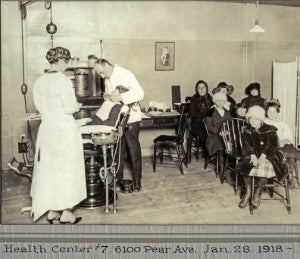 A city health center in 1918.
A city health center in 1918.
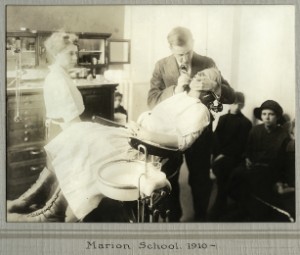 Dental examination at Marion School in 1910.
Dental examination at Marion School in 1910.
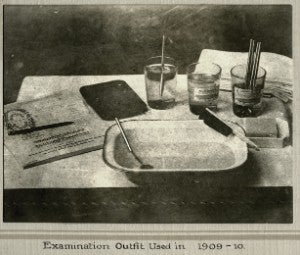 Examination tools used in the early 1900s.
Examination tools used in the early 1900s.
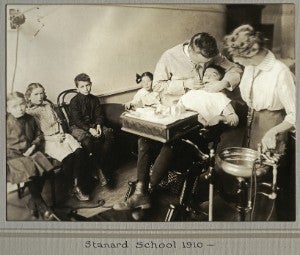 Dental examination in 1910 at Stanard School.
Dental examination in 1910 at Stanard School.
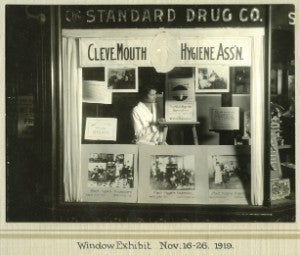 Store window exhibit at the Standard Drug Co. in 1919.
Store window exhibit at the Standard Drug Co. in 1919.
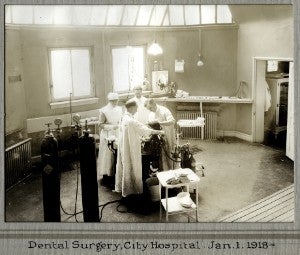 Dental surgery in Cleveland City Hospital in 1918.
Dental surgery in Cleveland City Hospital in 1918.
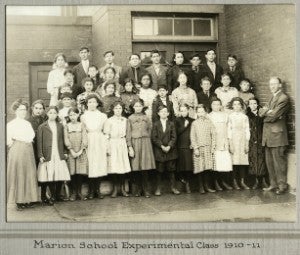 Students in the dental initiative at the Marion School in 1910-1911.
Students in the dental initiative at the Marion School in 1910-1911.
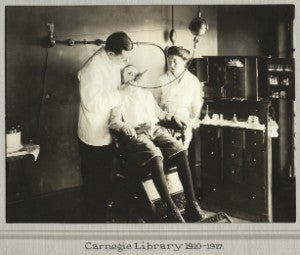 Dental examination at the Carnegie Library in the early 1900s.
Dental examination at the Carnegie Library in the early 1900s.
Photos courtesy of Dittrick Museum of Medical History.





